Reader Roz sent a bunch of nice caterpillar photos, though not many of them are identified. It’s up to you, the readers, to identify them, or at least have a marvel at the larval. (And please send in your photos!)
Roz’s introduction is indented, and you can enlarge the photos by clicking on them:
The Caterpillar Lab is a New Hampshire based non-profit that breeds and collects New England caterpillars from the field. They come yearly to the Arnold Arboretum or at least they have for the years I’ve been in Boston. I saw them fall 2021. These photos are from that visit.
As for identifying them, here is what I know:
Order: Lepidoptera
Families: Saturniidae and Erebidae
While I will let readers taxonomize further, I believe the genus and species for some of the caterpillars I saw include:
- Promethea Silk Moth (Callosamia promethea)
- Brown-hooded Owlet (Cucullia convexipennis)
- Hickory Horned Devil, the larva of the Regal Moth (Citheronia regalis), which I got to let crawl on my hand and arm.
The Caterpillar Lab has a lovely Facebook page for those who may be interested.
JAC: The first two are clearly mimics of bird droppings.
JAC: This one’s a doozy!
JAC: Two photos of pupae:
JAC: Two twig mimics:

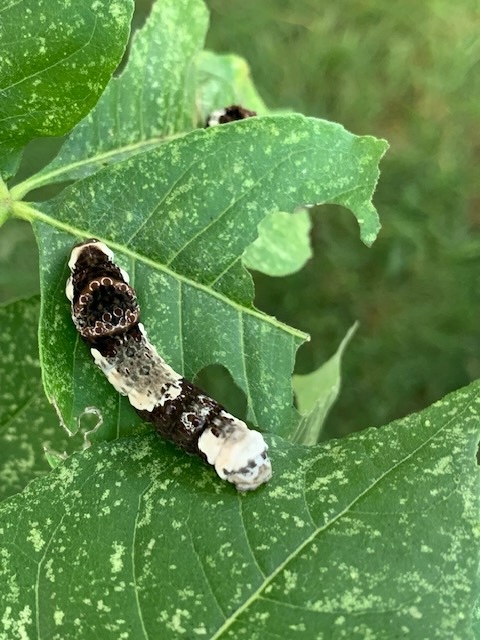

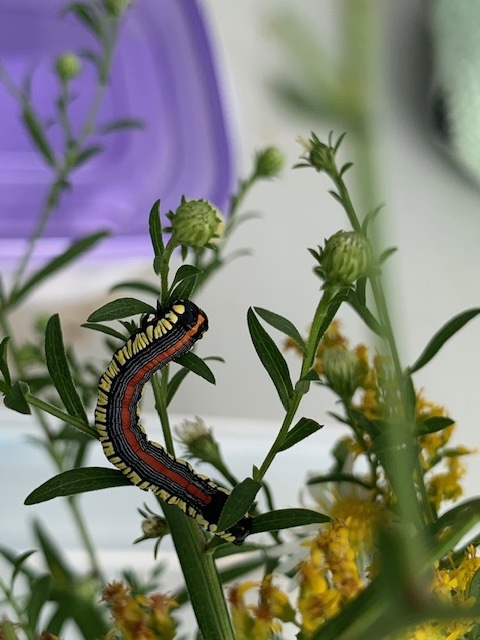









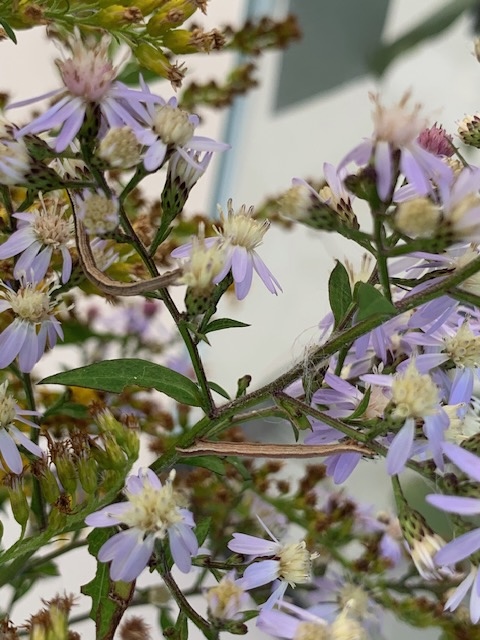
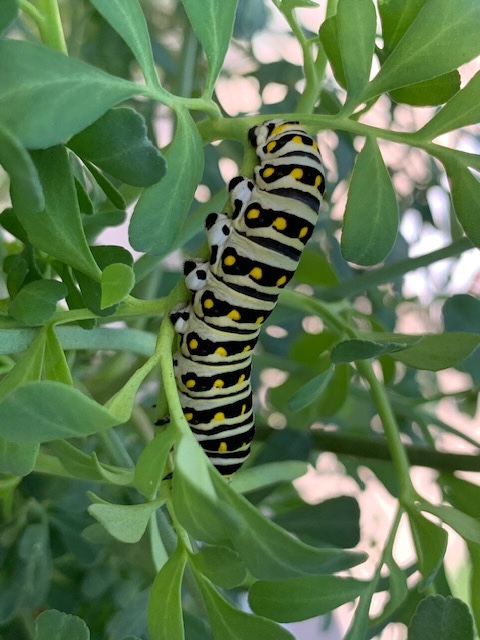

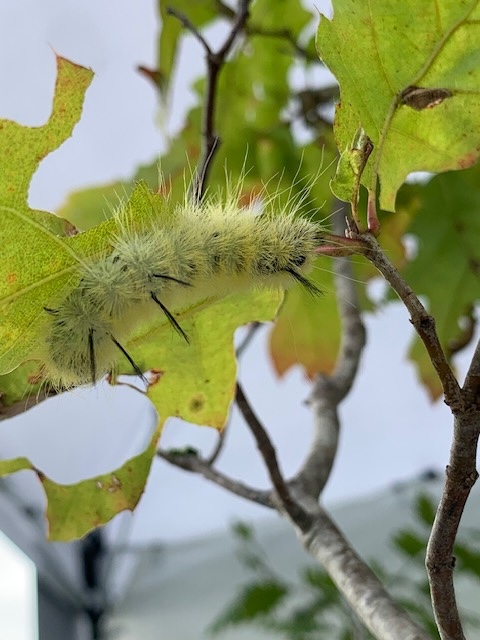
“have a marvel at the larval”
🙂
Very cool (of course!) I can identify them, but others should have a go.
I will mention that the first twig mimic looks to me like Biston betularia, the larva of the famous peppered moth. This is the moth used long ago in studies that showed natural selection of different color morphs of the moths as they rest on tree bark.
Thank you, Mark! I think you are right about the first “twig.” Wikipedia (https://en.wikipedia.org/wiki/Peppered_moth) tells me the peppered moth caterpillars can sense the color of the twig they are mimicking and match it.
If you can easily ID any of the others, I’d love to learn.
–Roz
The “doozy” is Citheronia regalis (Saturniidae), aka the hickory horned devil as a larva and the regal moth as an adult. Folks interested in caterpillars should get David Wagner’s “Caterpillars of Eastern North America”, it is very handy with a lot of good color photos.
Cool! I used to collect caterpillars when I was a kid. I don’t think I collected enough of then to make a dent in their overall abundance—at least I hope not!
It was fun to see the caterpillars first thing this morning. Then I went to the earlier Hili dialog, and I thought “Another strange caterpillar!” — but quickly realized it was actually a photo of a croissant in hand, not a caterpillar.
Same here. The second picture of pupae above certainly affected my initial interpretation of the croissant.
Yes, and my next fleeting thought involved the taste of an insect. (Not a pleasant thought.) But I’m a bread lover, so my perception quickly righted.
ok, so the cats are:
1. Giant swallowtail. Our largest butterfly. Early stages are amazing mimics of wet gooey bird poop, but this mature one has transitioned into what is thought to be a snake mimic – being far too big to pass for bird poop.
2. Hooded owlet moth. I typically see these on goldenrod, late in the season.
3. Cecropia moth. Our largest moth in terms of wing span. They are huge.
4. Imperial moth. Related to hickory horned devil. Pretty much just as big.
5. Pine imperial moth, I think.
6, 7. Hickory horned devil, of course. Described as our biggest caterpillar, and I think largest moth by weight but I’d have to check. I’ve raised these from eggs several times. You can get eggs and pupae of these and other species thru the mail. But it’s a big job and you can’t leave for vacation.
8. Promethea moth
7. The cocoons look like luna moth cocoons
8. Assorted pupae extracted from cocoons. They all look like giant silk moth/Saturniid pupae.
9, 10 Peppered moth and I possibly the 2nd one is also.
11. Black swallowtail.
12. 13 14 Dagger moth.
Thank you, Mark!!!!!
I puzzled for hours trying to ID them. Your list is wonderful to have.
The Giant swallowtail caterpillar NOT feeling threatened, as I finally understood.
These really were a larval marvel. Thanks. And thanks to Mark above for identifying these marvelous larvae.
Some three decades ago I was startled to find a huge beautiful moth on the ground, wings spread flat on the gravel driveway next to the cottage that I was renting then on Mount Tamalpais, Marin County, San Francisco Bay Area. The moth was as big as my spread hand, or even slightly bigger.
It occasionally trembled as I watched it for a long time, maybe an hour or more. Eventually it stopped moving, and I carefully slid a stiff piece of paper under it and took it into my cottage, to marvel at the creature some more.
After a while I carefully put it into a box and brought it to the visitor center in Muir Woods National Park, which was a half-hour hike below my cottage. There I learned that this beautiful insect was a Ceanothus Silk Moth.
http://northwestbutterflies.blogspot.com/2018/06/ceanothus-silkmoth-part-1.html
I also learned that it didn’t have a mouth and flew for only one reason, and only for a week or two — to mate. I hoped it had accomplished its purpose, as it would have been a shame that something so magnificent had lived only to entertain me. But to me it was indeed a special gift. I never saw another Ceanothus Silk Moth.